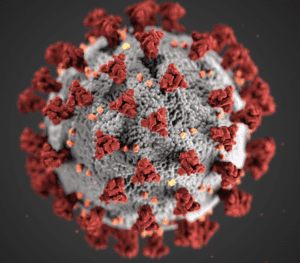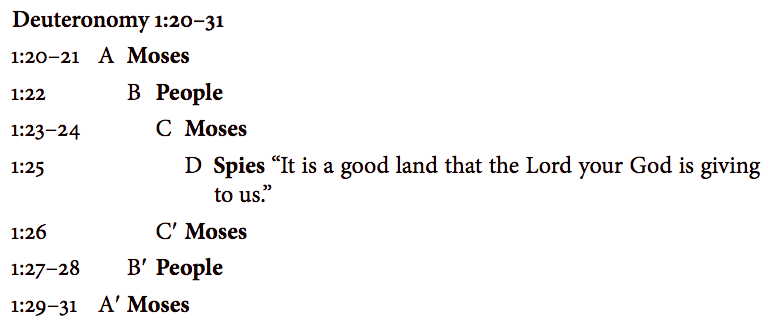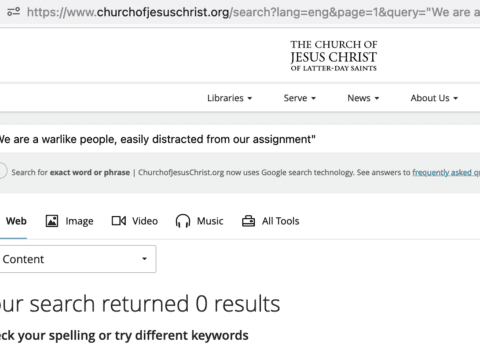 One of our nation’s leading bodies of scientific influence, the Center for Disease Control, is citing their recent scientific study — as are their media allies like the New York Times — to encourage parents to have their children vaccinated. The study has some easy-to-understand objectives and principles that make it a great topic for talking about science and how science works. If you care about the science education of those around you, this study might be a good one to discuss. Strangely, it can also help you understand how science is much different than religion and politics, particularly political propaganda.
One of our nation’s leading bodies of scientific influence, the Center for Disease Control, is citing their recent scientific study — as are their media allies like the New York Times — to encourage parents to have their children vaccinated. The study has some easy-to-understand objectives and principles that make it a great topic for talking about science and how science works. If you care about the science education of those around you, this study might be a good one to discuss. Strangely, it can also help you understand how science is much different than religion and politics, particularly political propaganda.
When scientists do science, they must always understand that an apparent effect can have many causes and that there can be random variation that influences their observations. A “study” that doesn’t try very hard to honestly consider such problems is not scientific. For example, if I have a friend who wears bright green shirts and that friend has diabetes, I might think, “Ah ha, perhaps bright green colors cause diabetes.” But something else might be the cause. One human data point is not enough. To be more fair, I might go interview hundreds of diabetes patients and ask them if they have ever worn bright green colors or eaten foods with bright green food coloring. “Wow, 52% of diabetes patients have repeatedly worn bright green, and 96% have eaten bright green, and 72% regularly eat bright green! Bingo!” But that still doesn’t mean anything. It’s too early to condemn Mountain Dew, Skittles, and green apple Jelly Belly jelly beans for their greenness. A control group is needed in which we compare people who are similar but don’t have diabetes.
Things become more meaningful and more interesting when you add a control group. Imagine interviewing 1000 healthy people and finding that only 50% of them have ever knowingly worn or consumed bright green. Hypothesis confirmed? We’re not there yet. What if the healthy people were also much younger than the diabetes patients we interviewed? What if they live in much different environments, have much different genes, have much different patterns of exercise and diet, and eat much different foods? Even if we do our best to account for all this, there is still the possibility that a statistically significant relationship between diabetes and bright green foods is not because bright green food coloring causes diabetes, but is merely correlated with a factor that is the actual cause. In this case, bright green food coloring may be consumed more by those with diabetes because it is part of a less healthy diet that they prefer, a diet with abundant bright green food coloring added to candy, soda, and various sweets, for example. The point here is that doing a study in a scientific way takes a lot of caution and thinking, and a desire to be fair and honest before we dare to declare that a hypothesis even seems to have scientific support.
Now let’s look at the CDC study on diabetes and COVID. The study is “Risk for Newly Diagnosed Diabetes > 30 Days After Sars-CoV-2 Infection Among Persons Aged < 30 Years — United States, March 1, 2020 – June 28, 2021,” prepared by Catherine E. Barrett et al., released Jan. 7, 2021. Here is the summary as published on the CDC website:
Summary
What is already known about this topic?
SARS-CoV-2 infection is associated with worsening of diabetes symptoms, and persons with diabetes are at increased risk for severe COVID-19. SARS-CoV-2 infection might also induce newly diagnosed diabetes.
What is added by this report?
Persons aged <18 years with COVID-19 were more likely to receive a new diabetes diagnosis >30 days after infection than were those without COVID-19 and those with prepandemic acute respiratory infections. Non–SARS-CoV-2 respiratory infection was not associated with an increased risk for diabetes.
What are the implications for public health practice?
The increased diabetes risk among persons aged <18 years following COVID-19 highlights the importance of COVID-19 prevention strategies in this age group, including vaccination for all eligible persons and chronic disease prevention and treatment.
So the CDC is calling for increased vaccination of young people because of the frightful risk of diabetes that can be caused by COVID, as demonstrated by their scientific study. Many parents will be frightened by this and may feel an increased need to take the risk of vaccination for their kids to prevent lifelong harm from diabetes. Here is where you can start doing science, if you are not a scientist, by thinking for yourself and asking questions, a practice that is actually the foundation of the scientific method. That’s right, “follow the science” in the scientific world really means follow the scientific method, which begins with daring to ask questions and then seeing if the data fits a hypothesis, or not. Unfortunately, in some other worlds, such as the world of politics, ,”follow the science” means just the opposite: quit asking questions and trust your glorious leader. That’s actually much more like religion when it tells you to just believe. (Good religion, in my opinion, allows for questions and doubt while seeking to provide meaningful answers and yet recognizing that faith is always needed, but not blind faith. I like faith that can grow as a result of asking questions and seeking answers patiently.)
Step one is understanding what the study did. It begins by mentioning that it is known that adults with COVID are more likely to have diabetes than those who don’t. It’s well known that obesity is a major factor associated with risk of death and hospitalization for adult COVID patients. The studies cited (references 4-7 in the study) all deal with patients requiring medical care. That’s clear from the titles of three of the studies, and the other one (Sattish et al.) was a meta-analysis of many studies wherein “all studies were hospital-based, and the patients were mostly severely or critically ill.” COVID patients needing hospitalization are much more likely to be obese. Sattish et al. state that, “While newly diagnosed diabetes in COVID-19 patients could be attributed to the stress response associated with severe illness or treatment with glucocorticoids, the diabetogenic effect of COVID-19 should also be considered….” But again, this is looking at hospitalized patients who are much more likely to be obese and have other comorbidities. What happens when BMI or other indicators of obesity are considered? that’s an important question for adults and perhaps the first issue to consider in a study of children.
So how did the CDC study account for the important issue of obesity and other related factor? Here you don’t have to wade through the entire study. Just search for the word “obesity” and note that it occurs only once in this critical sentence: “Third, the present analyses lacked information on covariates that could have affected the association between COVID-19 and incident diabetes, including prediabetes, race/ethnicity, and obesity status.”
Hold on, you mean that the extensive healthcare databases they relied on didn’t include any clues about the basic health of the children being examined? Nothing on body weight, BMI, or other indicators on obesity? No data on blood sugar level (prediabetes means blood sugar is high)? Really?
But that’s just one of several gaps. As you read the study, there are a number of questions one should ask to see if the study is based on real science or something else. A very mainstream doctor and scientist, Vinay Prasad MD MPH, a hematologist-oncologist and Associate Professor in the Department of Epidemiology and Biostatistics at the University of California San Francisco, has done some of that work for you already in his post, “Does COVID19 cause diabetes in kids? The CDC’s publishes an embarrassing study,” Jan. 8, 2021. Here’s an excerpt that begins with a discussion of the two databases that were used, IQVIA and HealthVerity:
In IQVIA, among kids with COVID19, a whopping 68 out of 80,000+ or 0.08% ended with diabetes; among kids without COVID19, it was 132 out of 400,000+ or 0.03% ended up with diabetes, and among kids with prior respiratory infection it was ~0.06%
The absolute risk of diabetes due to COVID (if you believed this is causal) appears to be an increase on par with a swiftly eaten bag of skittles.
Now in the HealthVerity database, the risk of diabetes post COVID19 was 0.25% (a quarter of 1 percent), if you were tested for COVID19 but negative, it was 0.19% (one fifth of 1 percent). Here, COVID appears as risky as a McDonalds supersized soda.
The CDC trumpets this finding as “children and teens 18 years & younger who have had #COVID19 are up to 2.5 times more likely to have a #diabetes diagnosis after infection”
Is that a fair take away or a fear-mongering distortion?
First, the whole analysis hinges on the idea that age-sex matched kids without COVID should be comparable to the kids who got covid in terms of risk of diabetes. The only difference between the kids should be that some, unfortunately, had COVID. But COVID may be more likely to affect kids of lower socioeconomic status, of certain races, and kids who were already overweight or suffering from medical problems.
Does the CDC attempt to correct for any of these confounders? Not at all. They surely have height and weight, and could adjust for BMI, but do not. I am truly puzzled as to why.
Second, they don’t have the true denominator. This is only kids who present and have a COVID19 diagnosis. Seroprevalence [evidence of COVID from blood tests] is needed to find the real denominator of kids with COVID19. This will lower the absolute risks. COVID19 may be downgraded from a whole bag of skittles to a single, red skittle.
Does the CDC adjust for this? Nope
Third, kids who seek medical care for COVID19 may get more blood tests than those without COVID19, and perhaps more than those with other respiratory viruses in yesteryear. This too may capture more diabetes.
Does the CDC correct for ascertainment? Not at all
Finally, the HealthVerity database is particularly odd, as the kids who get tested but test negative might be very dissimilar from those with COVID19. It may include some who are planning a trip to Maui (Hawaii used to require testing to visit), and compare them to kids who come in feeling very sick.
Does the CDC correct for this? No….
Lastly, the CDC uses this study to push vaccination, the findings “underscore the importance of COVID-19 prevention among all age groups, including vaccination for all eligible children and adolescents…”. But, the study provides no useful information to further weigh the risk benefit balance for vaccination beyond what was presented at the VRBAC meeting for 5 to 11, and a prior one on 12-17, a topic of wide global debate, with differing recommendations by nation (US vs UK).
As Marty Makary says, the CDC’s study would not pass a 7th grade science fair competition. It is certainly not serious scholarship. I have no idea if COVID19 causes more diabetes in kids than not having it; and the study gives me no better information to guide vaccination policies.
Or you can watch Dr. Prasad discuss this study on YouTube:
Maybe it’s true that the databases the CDC study chose to examine did not make such information available, but even then, given what is known about obesity and COVID, it should have been possible to make some reasonable adjustments. In fact, the CDC’s own data could have been applied to make this study slightly more reasonable. See V. Wanga et al., “Characteristics and Clinical Outcomes of Children and Adolescents Aged <18 Years Hospitalized with COVID-19 — Six Hospitals, United States, July–August 2021,” MMWR Morbidity and Mortality Weekly Report, 70 (2021):1766–1772, DOI: http://dx.doi.org/10.15585/mmwr.mm705152a3. There we find that among young people hospitalized for acute COVID, “approximately two thirds of those aged 12–17 years had obesity.” That’s much higher than normal, according to the CDC’s data on childhood obesity or to data shared by StateofChildhoodObesity.org.
Failure to even try to consider obesity and prediabetes means that this study wasn’t about doing real science, but something else. Propaganda, perhaps, for the noble cause of scaring parents into having their children be vaccinated for a disease that has almost no risk for children and has not had the years of safety testing normally needed to approve a new vaccine nor even the same level of testing as the vaccines approved for adults.
I know, to question the CDC or Fauci is to question the faith, the Faith of Science itself, where the new scientific method is to listen faithfully to the Anointed Experts and High Priests of Science, and stop asking apostate questions or be cancelled and shamed. But back in the days before science became a faith, the scientific method was all about asking questions and not relying on authority but data and inquiry to figure things out. Maybe it’s time for another restoration, or a little less faith.











Thanks for the article. It is a good reminder that not so thorough research can be published at well known organizations.
Steve
What's your point? Stop posting about your lame interpretations of things you don't understand. You only add to the problem.
Posting about shoddy and manipulative scholarship adds to the problem of shoddy and manipulative scholarship?
Has Jeff admit COVID was a lab leak and China needs to pay for the trillions of dollars of damage they have done?
Good article. It proves the very point that the CDC is not science and doesn't have the best interests of us in mind. Its all part of a narrative of power, control and politics.
You aren't very smart, Rob. Sorry, you just don't have what it takes to engage in intellectual discussion. You say stupid things in a public forum. You should be ashamed.
The CDC are fear mongering. It's abundantly clear that the CDC is flat out lying and Americans are so gullible that they just suck it all up as truth.
The CDC is a joke.
Yes, Rob, we can agree that Americans are gullible. Now would you mind explaining why the death rate in the Trump-voting anti-vax areas is twice what it is in the states with populations who vax, mask and demonstrate responsibility for their fellow citizens? But, meanwhile, please consider consider being so much more informed and intelligent than the rest of us so we can look forward to there being fewer of you.
I'm just going to leave this here in case anyone wants to refer to Covid death rates and which states have historically voted red or blue.
You're welcome,
Steve
https://www.beckershospitalreview.com/public-health/us-coronavirus-deaths-by-state-july-1.html
https://en.wikipedia.org/wiki/Red_states_and_blue_states
https://www.ncronline.org/news/coronavirus/someone-killing-republicans-and-trump-voters
Anonymous,
You might take a look at this—written by students at the U of Chicago:
https://realnewsaggregator.com/news/2022/01/11/university-of-chicago-students-slam-unethical-booster-mandate-we-are-not-lab-rats/
The American Diabetes Association has published research about the Covid inoculations causing diabetes, has made public announcements to make people aware of it. They announced it months ago.
JR, the American Diabetes Association says the vaccines are highly effective and supports vaccination.
— OK
JR, the American Diabetes Association says that the covid vaccines "are proven to be highly effective at preventing severe illness and death" and
recommends vaccination.
Since diabetics are particularly at risk, the Diabetes Association advocated for the CDC "to prioritize all Americans living with diabetes for COVID-19 vaccination, marking an important step forward for our community."
— OK
Anon 11:36,
I didn't find mention anything about access to health care in rural areas. Do you think that health care access in rural areas could also skew the mortality rates? How about taking larger areas that would include both urban and rural areas so that the health care access is more normalized, like say at a state level? I'll refer you once again to that statistics that I presented rather than reading articles that already have a bias.
Steve
Jeff, you got to check out this new video:
Australia Enslaved And The Plan For The World
https://endtimes.video/australia-enslaved/
I sampled just enough of that "end times" video to see that it's blatant propaganda.
EndTimes.Video 10:19, you should be ashamed of yourself for spreading such garbage.
— OK